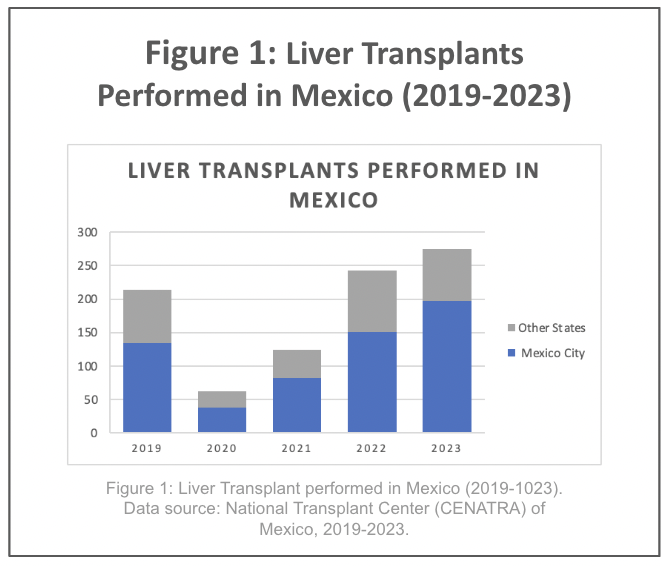Addressing disparities liver organ allocation: Towards equitable access to transplantation services in Mexico
Natalia Rodriguez-Payan1, Maria P. Cote1, Alicia Amairan2, Leigh Anne Dageforde1.
1Transplant Surgery, Massachusetts General Hospital , Boston, MA, United States; 2Medical School, Universidad Anahuac Mexico Campus Norte, Mexico City, , Mexico
Introduction: In Mexico, ensuring equitable access to liver transplantation services is paramount. However, current policies mandate that procured organs from the public health system must be allocated within the nationwide public network. This practice often leads to organs generated in one state being directed to another state, with Mexico City receiving most of the organs due to the larger concentration of public centers, significantly affecting access to organs in other states. This study aims to examine the existing disparities in liver organ allocation in Mexico, focusing on differences between Mexico City and the rest of the states.
Methods: Data was abstracted from the National Transplant Center (CENATRA) of Mexico, a public data set, spanning 2019 to 2023 focused solely on liver transplantation from brain-dead donors. The number of DBD livers, state of origin of DBD livers, and liver transplant rates are reported as frequencies and percentages. Additionally, the number of transplant centers with active licenses are reported as frequencies. The frequencies are reported comparing the state of Mexico City compared to the total in all other states.


Results: Analysis spanning the last five years revealed that, on average, 64% of liver transplants nationwide occurred in Mexico City (Fig. 1). In the last year, this proportion surged to 71% (figure 2a). Notably, over 50% of liver transplants in Mexico City stemmed from out-of-state donors, as depicted in Figure 2b. Additionally, while there was a decrease in the number of licensed liver transplant centers in other states from 59 to 54, Mexico City experienced a rise, increasing from 21 to 29 programs between 2019 and 2023. This growth only occurred in Mexico City, leaving approximately 50 other centers only able to work with the remaining 30% of organs.
Conclusion: The findings of the analysis highlight the disparity in liver transplantation services between Mexico City and other states, where most transplants are concentrated in the capital and heavily reliant on out-of-state donors. This imbalance is further exacerbated by the disproportionate increase in licensed liver transplant centers in Mexico City, leaving other regions underserved. Implementing structured national guidelines incorporating regional allocation could help address this disparity, ensuring fair access to liver transplantation services across the country. Such measures could be helpful to promote equitable healthcare outcomes and alleviate the burden on patients outside of Mexico City awaiting liver transplants.
